Are you looking for versatile dog breeds that are as captivating as they are adorable puppies? Look no further than German Shorthaired Pointers. These kennel club-recognized dogs are renowned for their stunning coat colors, which add to their unique allure. From white and black to the liver, the range of hues in German Shorthaired Pointers is genuinely remarkable. Whether you’re a devoted breed enthusiast or simply curious about these magnificent canines, understanding their various colors is essential for puppy owners.
German Shorthaired Pointers, or GSPs, are intelligent gun dogs with a rich history. Originating in Germany, these popular breeds are loved worldwide for their exceptional hunting skills and friendly nature. As per the breed standard set by the American Kennel Club (AKC), GSPs come in various coat color variations, including liver puppies and black GSPs, which make them distinct and irresistible. Responsible breeders ensure the quality and health of these amazing dogs.
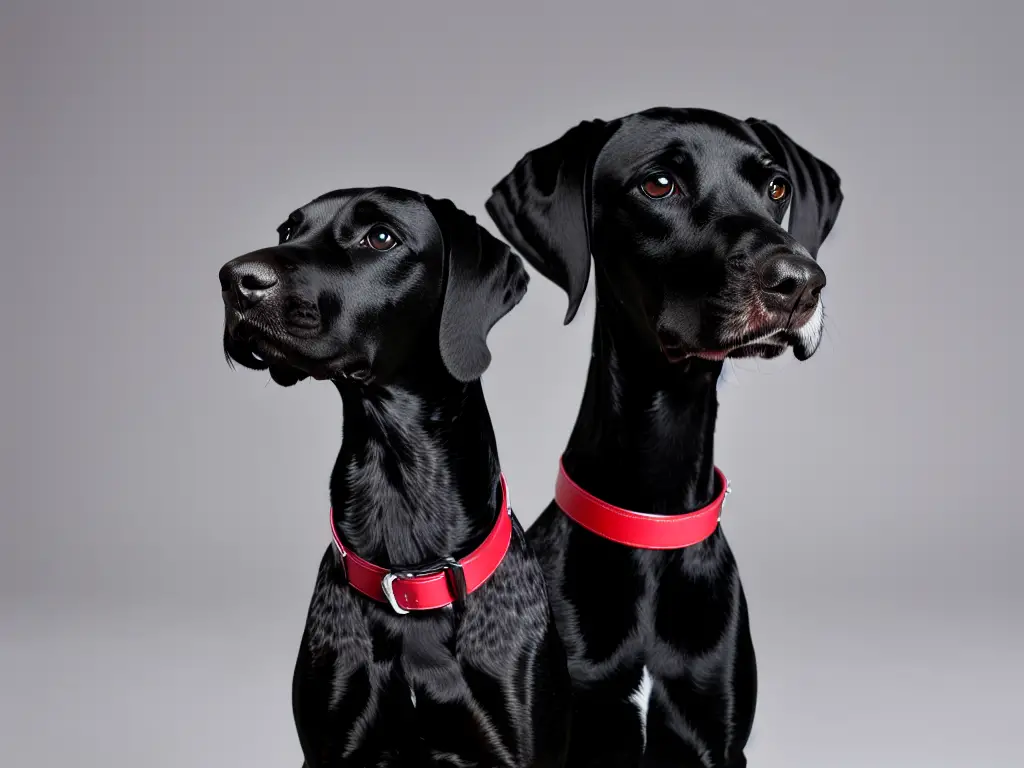
So, if you’re ready to dive into the world of German Shorthaired Pointer colors and learn more about the various shades that can enhance your dog’s health, join us as we explore this fascinating aspect of one of Germany’s most beloved breeds for dog owners.
Table of Contents
- 1 Understanding the Different Colors of German Shorthaired Pointers:
- 2 Exploring the Four Main Colors of German Shorthaired Pointers:
- 3 Color Combinations in German Shorthaired Pointers: A Closer Look:
- 4 Changes in German Shorthaired Pointer Colors Over Time:
- 5 Conclusion
- 5.1 FAQs
- 5.2 Are specific colors more common in German Shorthaired Pointers?
- 5.3 Do German Shorthaired Pointers’ coat colors affect their temperament?
- 5.4 Can I predict how my puppy’s coat color will develop as they age?
- 5.5 Are specific German Shorthaired Pointer colors more prone to health issues?
- 5.6 Are there any restrictions on participating in dog shows based on coat color?
- 6 Related posts:
- 7 German Shorthaired Pointer Puppy Guide: Breed Info & Care
- 8 German Shorthaired Pointer: Breed Info & Facts
- 9 Managing German Shorthaired Pointer Shedding: Expert Tips
- 10 German Shorthaired Pointer Temperament & Facts
Understanding the Different Colors of German Shorthaired Pointers:
German Shorthaired Pointers are known for their beautiful and diverse coat colors. From solid shades to intricate patterns, these breeds exhibit various color variations that make each puppy unique. Let’s take a closer look at the different colors found in this remarkable breed, including the adorable spots on their coats.
Coat color in German Shorthaired Pointers, one of the popular dog breeds, is determined by genetics and specific genes. These genes interact to produce various hues and markings on their coats. Here are some key points to help dog owners understand the fascinating world of German Shorthaired Pointer colors, per the breed standard.
- Solid Coats: German Shorthaired Pointers are known for their solid-colored coats, which come in various shades. These breeds can have solid liver (brown) or black or liver and white combinations. These coats are consistent throughout the puppies and adult dogs.
- Many German Shorthaired Pointers, a popular hunting dog breed, have patterned coats with spots or patches of different colors. The most well-known pattern, called “liver roan,” consists of liver-colored hairs interspersed with white hairs, creating a speckled appearance. Hunters often seek after these puppies due to their unique coat patterns.
- Other Color Variations: In addition to solids and roans, German Shorthaired Pointers (GSP) can also have black coats with ticking (small colored spots on a white background), saddle markings (dark patches on the back resembling a saddle), or even brindle patterns (stripes or streaks of darker color on a lighter base). These variations are common among GSP puppies and dogs.
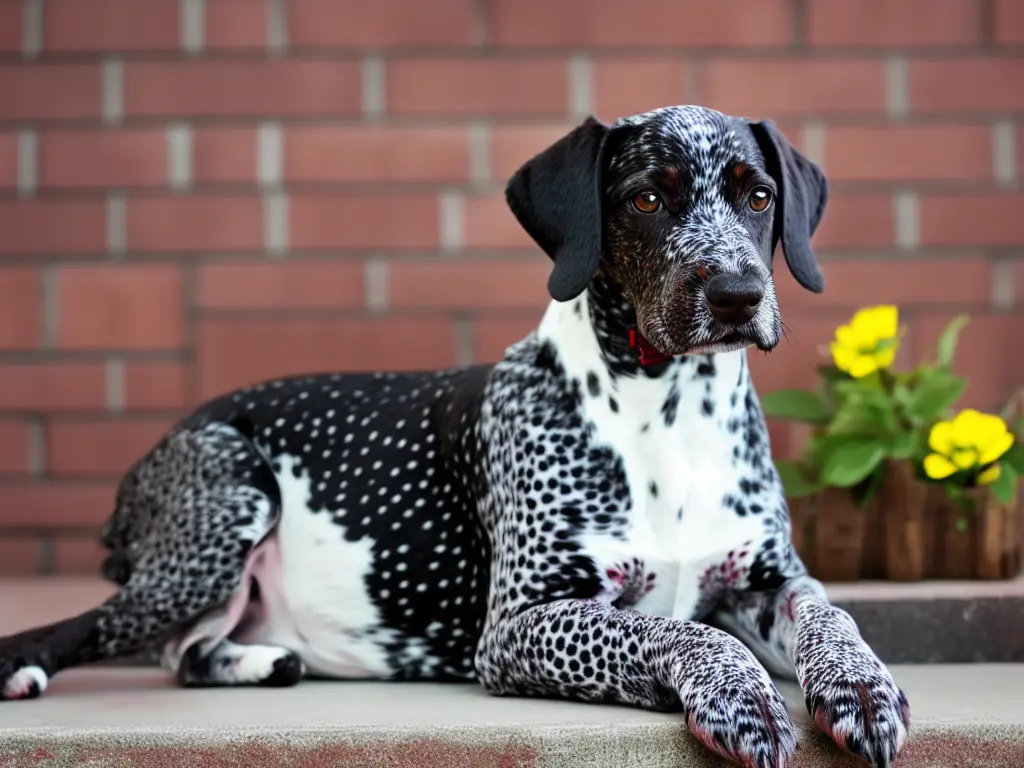
Recognizing the different coat colors of German Pointers, including solid coats and patterned ones, is aesthetically pleasing and helps identify individual dogs within the breed. Whether you prefer the elegance of solid coats or the charm of patterned ones, understanding these variations adds another layer of appreciation for this versatile breed, especially white German Shorthaired Pointers with their distinctive white markings.
So, next time you come across a black or merle German Shorthaired Pointer, take a moment to admire its unique coat color and appreciate the genetic marvel that created such diversity among these remarkable hunting dogs.
Exploring the Four Main Colors of German Shorthaired Pointers:
German Shorthaired Pointers come in various colors, including the merle pattern, each with distinct characteristics contributing to the dog’s overall appearance. Let’s look at the four colors commonly seen in this breed: liver, black, liver roan, and black roan. Hunting enthusiasts often seek These colors due to their unique patterns.
- Liver: This color is characterized by a rich brown hue that resembles the color of the liver. German Shorthaired Pointers with this color have a solid coat without any other markings.
- Black: Unlike liver, black German Shorthaired Pointers have an entirely black coat. This color gives them a sleek and elegant appearance.
- Liver Roan: Liver roan German Shorthaired Pointers have a white base coat with patches or speckles of liver-colored hairs scattered throughout. This creates an attractive and unique pattern on their skins.
- Black Roan: Similar to liver roan, German Shorthaired Pointers have a white base coat but with patches or speckles of black hairs instead. This color combination adds depth and texture to their overall look.
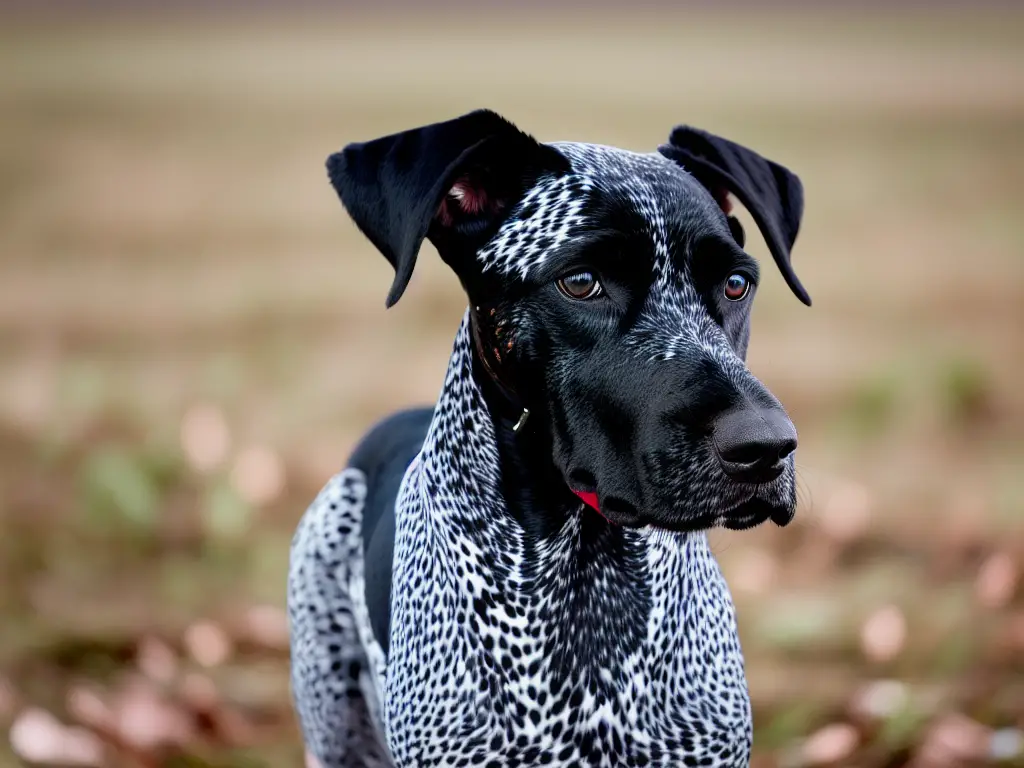
It’s important to note that breed standards specify acceptable variations within these four primary colors: black, white, dogs, and gene. For example, some German Shorthaired Pointers may exhibit slight variations in shade or intensity within their primary color.
These distinct colors of white and black German Shorthaired Pointers play an essential role in this versatile breed’s aesthetics and functionality. Their short coat and dog hair provide natural camouflage, allowing them to blend into various hunting terrains effectively. Whether it’s tracking game through dense forests or sprinting across open fields, these colors help the white and black German Shorthaired Pointers remain undetected by prey.
Color Combinations in German Shorthaired Pointers: A Closer Look:
German Shorthaired Pointers are known for their visually striking coat colors and patterns, which can include variations of black and white. Let’s look closer at the various color combinations that make these dogs unique.
- Some German Shorthaired Pointers exhibit unique coat patterns, such as ticked or patched. These patterns create a captivating look and add individuality to each dog’s appearance. Some of these patterns can be attributed to a specific gene known as the black gene (bb), which determines the color of the coat.
- The breed standards outline which color combinations, such as white and black, are desirable for show purposes. This ensures that specific coat patterns, like those of German Shorthaired Pointers, are recognized and appreciated within the breed. Additionally, dog hair is an essential factor to consider when evaluating the appearance of German Shorthaired Pointers.
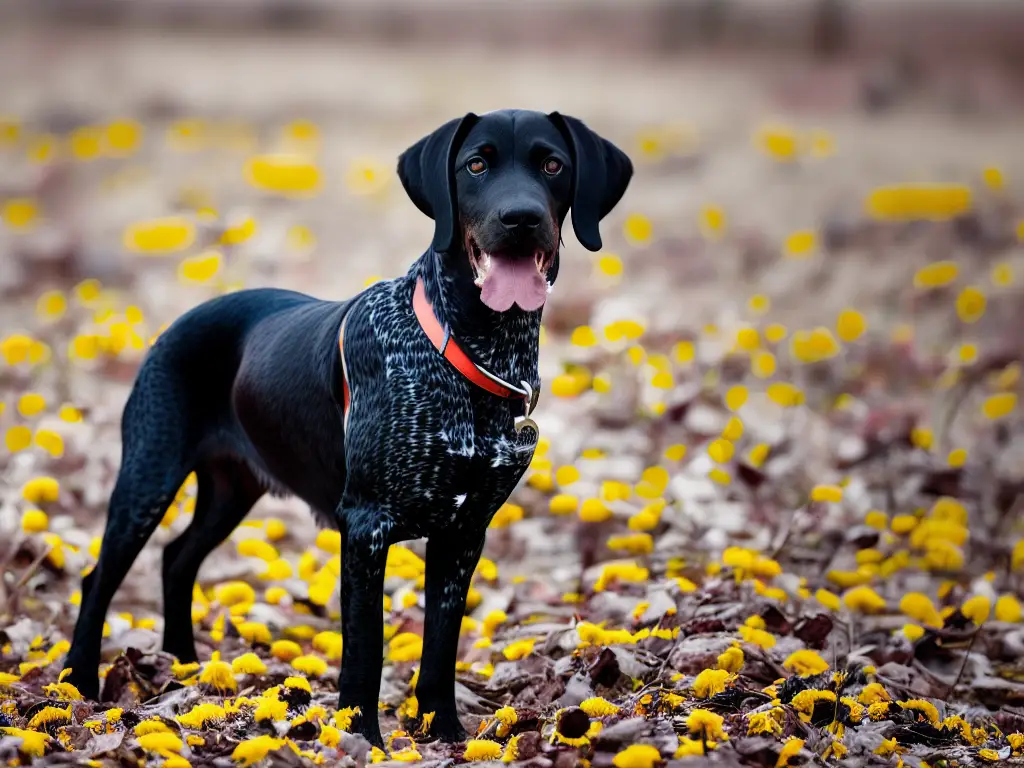
Gene combinations determine coat colors and patterns in German Shorthaired Pointers, including dogs with black, white, and liver coats. Here are some key points to understand.
- Base Coat: The base coat of German Shorthaired Pointers can vary in colors, including liver (brown) and black, depending on the gene combination inherited by the dogs.
- Ticked Patterns: Ticking refers to small black and white colored spots scattered throughout the base coat, creating a speckled effect. It is commonly seen in German Shorthaired Pointers due to a gene.
- Patched Patterns: Some German Shorthaired Pointers may have larger patches of black or liver color on their coats, adding an interesting contrast to their overall appearance. These patterns are determined by the gene controlling their skin’s colors.
- Recessive BB Gene Combination: German shorthaired pointers of different colors, including liver and white, with this gene combination, will have a solid black coat without ticking or patches.
- The genetic locus for determining coat color in German Shorthaired Pointers is called “Locus One.” This locus determines the coat colors of dogs, including black, liver, and white.
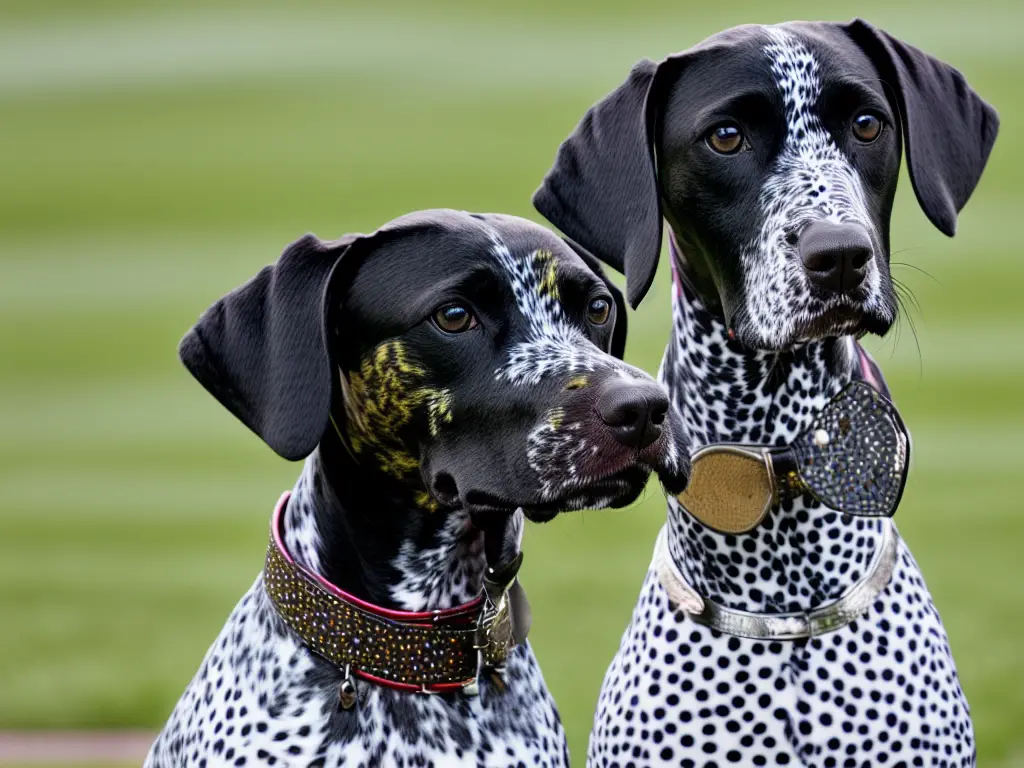
Changes in German Shorthaired Pointer Colors Over Time:
- The coat color of black and white dogs, such as the German Shorthaired Pointer, can change as they mature due to the gene responsible for their coloration.
- Puppies may have lighter or darker shades of dog hair that gradually transition into their adult coat color. This is true for all dogs, including German Shorthaired Pointers, which come in various colors, including black.
- Understanding the development process of German Shorthaired Pointers helps owners appreciate the changes in their dogs’ short coats and colors, such as black and white.
As German Shorthaired Pointers grow and develop, their coat colors, including black and white, can change noticeably over time. This transformation from puppyhood to adulthood is an intriguing aspect of their development. Here are some key points regarding the changing colors in dogs like German Shorthaired Pointers.
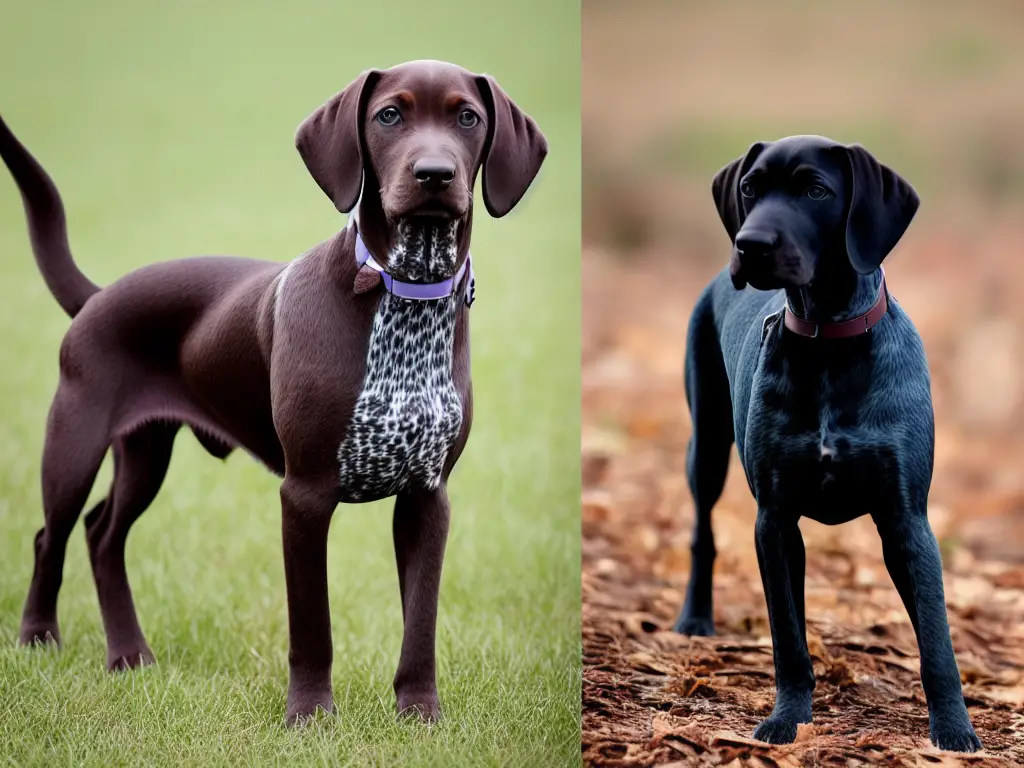
- Variation in Coat Color: When German Shorthaired Pointer puppies are born, their coats often display lighter or darker shades than they will eventually exhibit as adults. This variation is due to genetic factors and individual differences within the breed.
- Gradual Transition: Over time, these initial shades shift and evolve into the adult coat coloration. Depending on the specific dog, this gradual transition can take several months or even years. Owners must be patient during this period as they witness their furry companions’ unique transformation.
- Markings and Patterns: In addition to changes in overall coat color, German Shorthaired Pointers may also experience alterations in markings and patterns as they mature. These variations contribute further to each dog’s distinctive appearance.
- Appreciating Development: Understanding the evolution of coat colors in German Shorthaired Pointers allows owners to enjoy their pets’ journey throughout their lives. Witnessing these transformations can foster a deeper connection between owner and dog while providing insight into the breed’s fascinating lifespan.
Conclusion
In conclusion, understanding the natural color changes of German Shorthaired Pointers is essential for any owner or enthusiast. By exploring the four primary colors of these dogs and delving into color combinations, we gain a closer look at their unique characteristics. Recognizing how German Shorthaired Pointer colors may change over time allows us to appreciate the beauty and diversity within this breed.
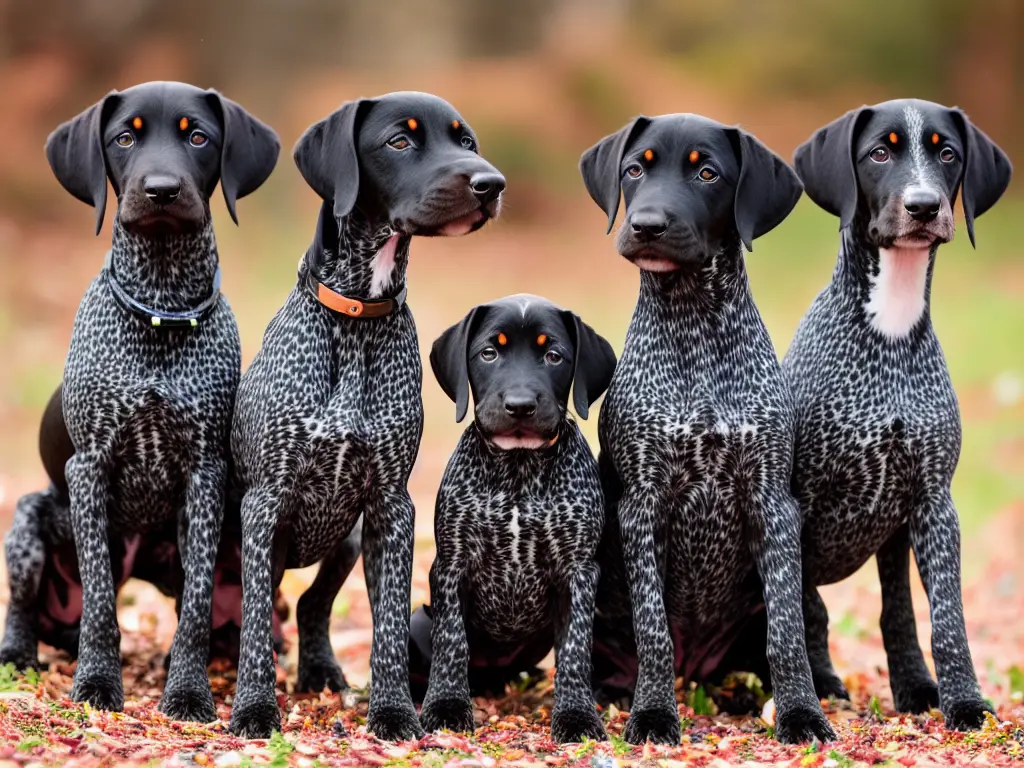
To ensure you make informed decisions regarding your German Shorthaired Pointer’s color and the health of its liver, it is crucial to consider reputable sources and consult with experienced breeders or veterinarians who specialize in dogs. This will help you navigate through the various shades and patterns available.
Remember that color can be exciting when selecting dogs like a German Shorthaired Pointer, but it should not be the sole determining factor. Temperament, health, and compatibility with your lifestyle are equally important considerations for dogs.
Whether you prefer a solid liver or liver and white combination coat, each German Shorthaired Pointer possesses its charm and personality traits. Embrace the uniqueness of your dog’s coloring as part of its overall appeal to dogs.
If you’re still unsure which color variation suits your preferences or have questions about German Shorthaired Pointer colors, refer to the FAQs section below for further dog guidance.
FAQs
Are specific colors more common in German Shorthaired Pointers?
While liver (brown) is considered the most common color among German Shorthaired Pointers, variations such as black, liver roan, and liver and white are also prevalent in dogs.
Do German Shorthaired Pointers’ coat colors affect their temperament?
Coat color does not directly influence a dog’s temperament. Dogs’ personality traits, such as German Shorthaired Pointers, remain consistent across different coat variations.
Can I predict how my puppy’s coat color will develop as they age?
Predicting how a puppy’s coat color will evolve accurately can be challenging, especially for dogs. However, observing the parents’ colors and consulting with a knowledgeable breeder, especially for pointer breeds, can provide some insights.
Are specific German Shorthaired Pointer colors more prone to health issues?
No evidence suggests that specific coat colors in German Shorthaired Pointers are more susceptible to health issues. Regular veterinary care and a healthy lifestyle are essential for all dogs, regardless of color.
Are there any restrictions on participating in dog shows based on coat color?
The American Kennel Club (AKC) recognizes various coat colors for German Shorthaired Pointers, allowing all registered dogs of these colors to compete in confirmation events.